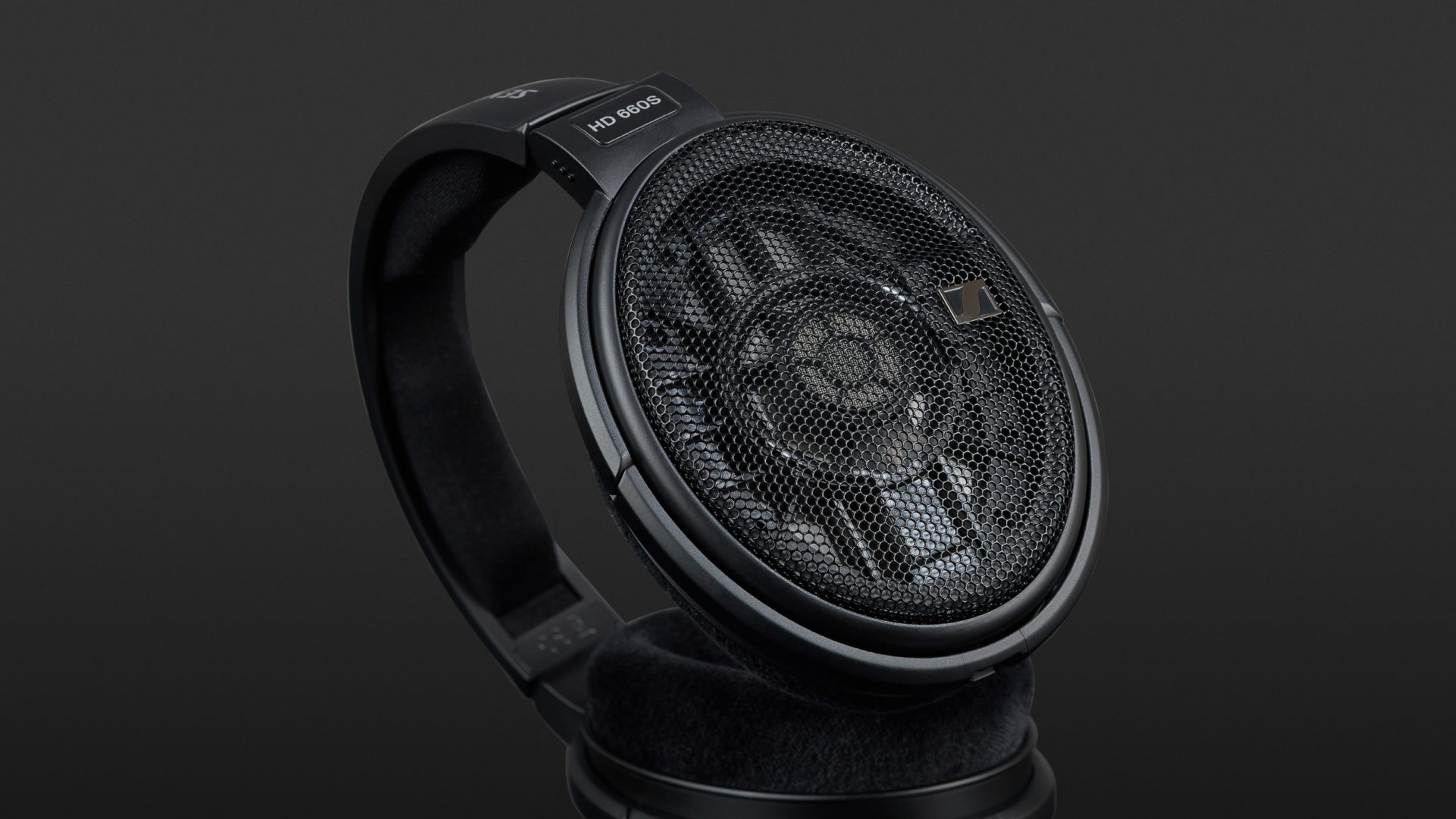The 2019 version of the Sennheiser HD 660 S remains a pair of open over-ear headphones worth every cent. The model has received a discreet cosmetic update that makes these headphones look slightly more contemporary and higher quality. This overhaul was not detrimental to their handling, and in terms of sound, the strengths of these headphones have not changed either.
Distortion-free sub-basses, high speech intelligibility, slightly attenuated treble and fine super-high-frequency reproduction characterize the sound image of these headphones. And the HD 660 S are also convincing in terms of signal resolution, stereo impression and depth graduation. Lively dynamics and freedom from distortion up to the highest volume also make these headphones a real powerhouse.
The Sennheiser HD 660 S are suitable as a hi-fi tool for enjoying classical, jazz and pop music, but due to their sound profile, they are also ideal as an analytical headphone for studio use.
The Sennheiser HD 660 S (New Version 2019) is a revised version of the popular high-end headphones. What do the new ones offer that the old ones didn’t?

Package
Included with the new Sennheiser HD 660 S are not only the headphones themselves but also an asymmetrical and a symmetrical interchangeable cable and an adapter. The asymmetrical cable has a large jack plug; the symmetrical cable has a 4.4 mm pentagonal connector. The adapter cable allows the asymmetrical cable to be connected to mini jack sockets. All plugs and sockets of the cables and adapters that are included are gold-plated to protect against corrosion. Last but not least, an instruction manual is included. All this is presented in an impressive black box with a piano hinge and the Sennheiser logo, packed in perfectly fitting foam. The new package is therefore identical to that of the pre-2019 version. Nevertheless, the contents of the box remain as exciting as they are extraordinary.
Design and materials
The design of the new version of the HD 660 S differs only slightly from the previous one. The updated version of the headphones is made almost entirely in black, with some silver accents. On the back of the ear cups, there are perforated grids through which the inside of the housing can be seen. The material used by the manufacturer is mainly plastic, but the perforated grids are made of black painted metal. This timeless design remains as appealing as it was a few years ago, and will certainly remain so in the future.
But let’s get to the news: The three touch-sensitive dots, which can be felt on the left ear cup of the headphones, have moved from the outside edge to the front of the headband bracket. In addition, this bracket has been shortened somewhat, so that there is no longer room for the designations “L” and “R” and as a result, these have moved to the inside of the arms. The re-design also means that there are no longer any open areas in the plastic on the inside of the arms. This gives the headphones a sophisticated look. In the previous version, the arms that hold the ear cups had a semicircular profile and in the current version, they have been angled and flattened. The slightly protruding outer ends of the headband have been made simpler, and the front and rear edges of the headband now look less rounded and are more sharply contoured. Sennheiser has given the HD 660 S a very discreet facelift, and consequently many of these innovations are not visible at first glance.
The ear cushions are firmly attached to a disc covered with foam. Both of these components can be replaced. Furthermore, the headphones are almost completely encapsulated. This means that there are no visible screws which might allow the device to be serviced in the event of a breakdown. In terms of workmanship, however, there is absolutely nothing to complain about with the newly launched HD 660 S, which is typical of Sennheiser.
Technology
The interior of the HD 660 S has not been reworked by Sennheiser for the 2019 version. The conversion units still rely on aluminium voice coils, which are extremely lightweight and are designed to reproduce sound impulses with the necessary precision. The cables supplied contain copper strands, their sheathing is reinforced with para-aramid and they promise that there will be hardly any structure-borne sound transmission.
According to the manufacturer, these headphones still transmit their audio signal in a very wide frequency range, ranging from 9 to 41,500 Hz. This means that not only do they reach below what is typically perceptible to the human ear in the bass frequencies, but also they reach far beyond the usual hearing range in the treble frequencies. To get an independent impression, we have measured some technical values for the new version ourselves. Surprisingly, the impedance we measured, at around 155 ohms, is almost 10 ohms lower than our results with the previous version of these headphones. Their maximum sound pressure level is almost identical, at 96.7 dBSPL.
Haptics & handling
These open over-ears feel extremely light when you first pick them up. The earpads are pleasantly supple, soft and skin-friendly. The average contact pressure of the HD 660 S is relatively high compared to their low weight. Over a longer period of use, I didn’t find that these headphones were 100% comfortable to wear.
At a length of 3 m each, both the enclosed interchangeable cables were very suitable in many “non-professional” listening situations. Since the double cable’s splice is relatively close to the ear cups, the two separate lead ends are kept safe from becoming tangled. The cables are easy to change but are relatively tight-fitting. The ear cups can be rotated and swivelled so that the headphones adapt well to any head shape. Due to the ratchet mechanism of the headband, it retains the head size that it was last adjusted to when you take it off.
Sound
These headphones are discreetly positioned in the bass range, as is usual with such open-backed devices. However, when they’re fired up with the appropriate audio, they also convert ultra-low bass without distortion. This is where the immensely wide frequency range of these headphones becomes noticeable. In the mid-range, the Sennheiser HD 660 S offers excellent speech intelligibility, even though the signal seemed a bit muffled to me, especially in the treble range. In the super-high frequency range, on the other hand, the treble is finely detailed. This is a benefit to their good subjective signal resolution and their stereo impression, as well as to their robust depth graduation.
These headphones implement their tonal signature perfectly up to the highest volumes. So if you like to listen to music over headphones at a volume that takes you up to the pain threshold and don’t want to encounter distortion, the HD 660 S are the right choice. The dynamics of the reproduced material was consistently lively and not clouded by either typically dominant frequency ranges or short-term transients. The Sennheiser headphones handle the latter in a restrained and powerful way.
When listening to guitar music, the mid-range of these headphones becomes apparent. The dreaded “sawing” in the ears is absent, even when listening to rock, alternative and metal. Without sounding too sharp, guitar and vocal signals can be heard clearly. But their strength is a typical strength of open headphones, in this case supported by an extremely wide frequency range. The openness of their sound becomes particularly clear with very differentiated audio signals.
According to Sennheiser, naturalness and precision should characterise the sound of these headphones as much as liveliness and balance. When listening to classical recordings, for example, the HD 660 S will undoubtedly give a perceptible “naturalness” to the sound being reproduced. And the sound of classical music does indeed appear balanced. But of course, tonal attributes of this kind always depend on the type of music that is being listened to through the headphones.
Technical specifications
- Ear couplingOver-ear
- Typeopen
- Transducer principledynamic
- Frequency response (headphones)9 - 41.500 Hz
- Impedance154,65 ohms
- Sound pressure level (SPL)96,71 dB
- Pressure averaged from big and small head778 g
- Weight with cable341 g
- Weight without cable256 g
- Cable length300 cm
What's in the box
- Unbalanced cable, 300 cm
- Balanced cable, 300 cm
- 6.35mm stereo jack





















































